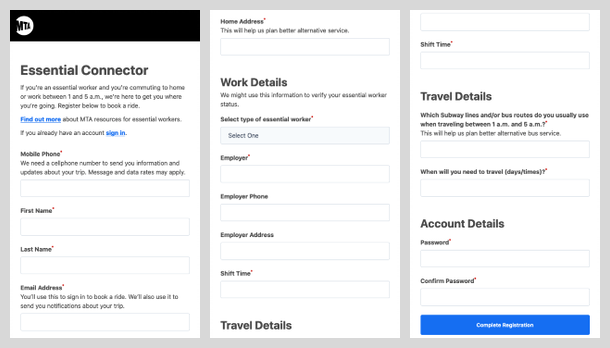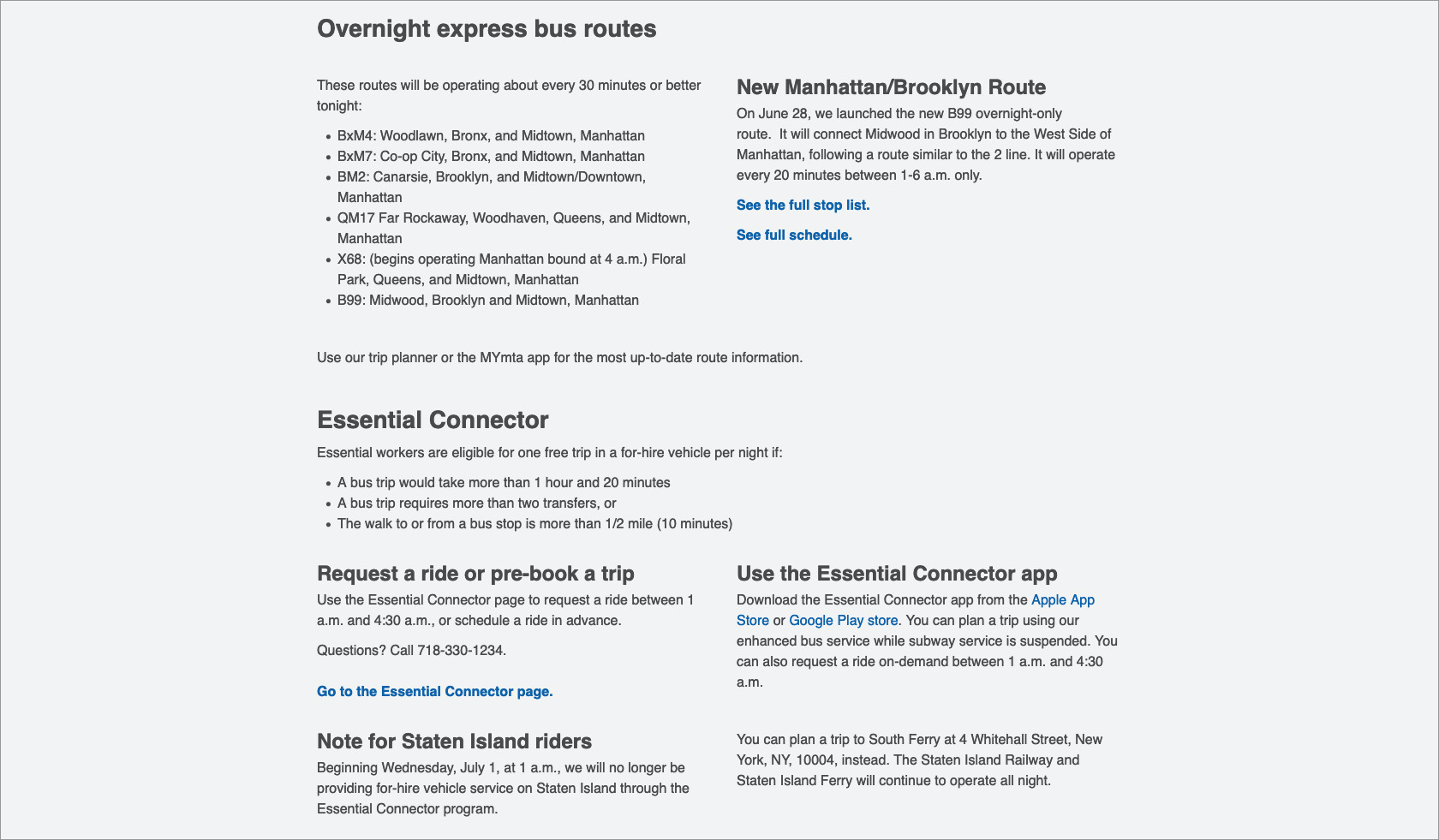Writing UX copy for the Essential Connector app
When I took a job at the MTA, I did not anticipate working on an app to help people book rides in cars. But in April, when Gov. Andrew Cuomo announced that the subway would be closed each night for cleaning during COVID-19, that became my team’s top priority.
This was the first time in the history of the subway that it wouldn’t be running 24 hours a day. Essential workers still needed to commute, and our enhanced overnight bus service wasn’t enough to bridge the gap for everyone.
With help from the good people at Axon Vibe and Postlight, we built an app that connected workers with for-hire vehicle services. We launched the Essential Connector app early on May 6, the first day of the subway shutdown. By the end of the app’s run, thousands of essential workers had used the service to commute to and from work.
Prioritizing transparency with riders
For the service to work, we needed pretty personal information from riders who used it:
- Where do you live?
- Where do you work?
- When do you commute?
- Who is your employer? How can we reach them if we need to?
My primary concern when I was writing copy for the app was telling riders why we needed this information and how we would use it. When I wrote copy for different screens, I would ask developers for specifics about how we would use input from each field. I included this in on-screen copy for riders.
Some examples:
- “We need a cellphone number/email address to send you information and updates about your trip.”
- When asking for a home address: “This will help us plan better alternative service.”
- When asking for work details: “We might use this information to verify your essential worker status.”

I also helped write the script for our call center, which helped book rides in vehicles. We were deliberate about when we required riders to verify their identity, to protect the privacy of people who used the service.
Writing about the Essential Connector on the website
When the subway shutdown began, we published a page on the site with details about overnight travel options.
The Essential Connector was a key part of this, but we wanted people to use bus service if possible. The webpage emphasized our enhanced bus routes first, then explained eligibility requirements for the Essential Connector. We encouraged riders to book their trips in advance, and, if trips weren’t eligible for a for-hire vehicle ride, we helped riders plan a trip on the bus.

In late August, the Essential Connector service ended. We updated copy on the site to point riders to our enhanced bus service, and we put a message on the Essential Connector sign-up page:
Effective August 31, the Essential Connector service has been discontinued.
Given our significant financial challenges and the lack of additional relief from Congress thus far, unfortunately we are no longer able to operate the for-hire vehicle service. We have recently added three new interborough bus routes that are designed to serve as many Essential Connector customers as possible.
You can see all of your options for overnight travel and use our trip planner or the MYmta app to plan your journey.
As always, thanks for riding with us.